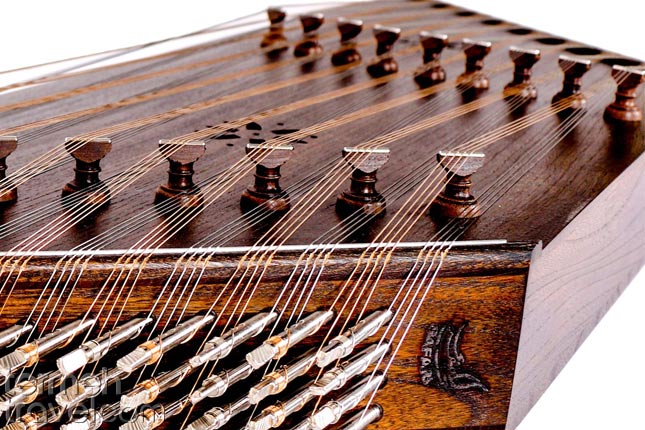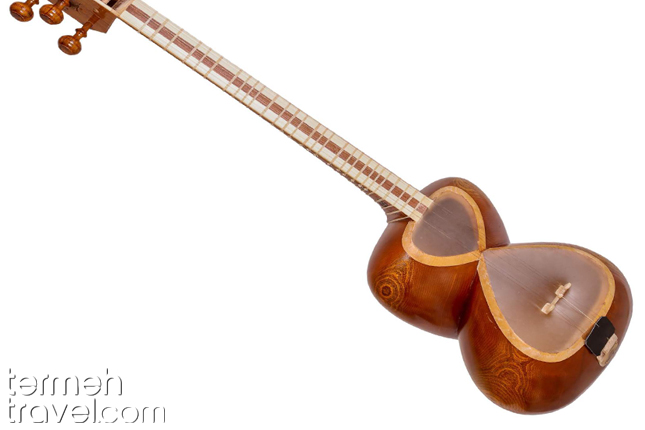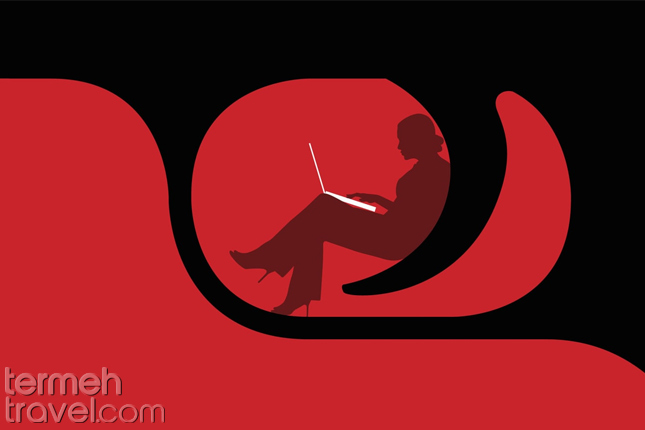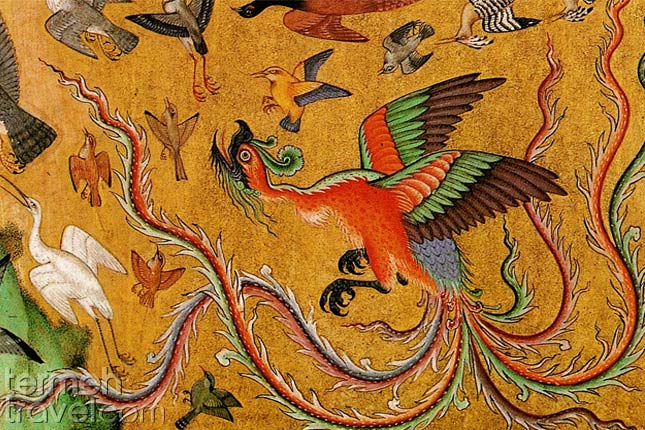Music is the window to the soul. That is how crucial music is to our lives, no matter where we are from. Each culture has its own unique touch on music. Each country has created magical instruments to let people hear their authentic sound and music. In Iran, the extraordinary artists carved wood patiently with their hands, added passion and value to bring Persian instruments to the world and let the whole world hear their adoring sound.
We have different Persian musical instruments with unique shapes and sounds, but they share some attributes. The delicacy is a bold element in Persian instruments. All of these musical instruments are delicate enough to make your souls fly out of your body and back to where they belong.
You do not need to know the Persian language to be able to connect to Persian music because these outstanding Persian instruments know how to go beyond the language barriers and find your minds and souls’ language. You just need to listen to them carefully and enjoy their beautiful rhythm.
Table of Contents
What Are the Most Known Persian Musical Instruments?
Santoor
When you listen to Santoor, the first thing that grasps your attention is its charismatic notes and delightful melody. You can close your eyes and imagine yourself in heaven, listening to this mesmerizing sound that can easily change your mood and take you on a journey. While listening to Santoor, its sorrowful melody brings tears to your eyes, and with the rhythmic melody of it, you find it impossible to stop your smile.
By looking at Santoor, you see a geometrical wooden box with brass and steel strings on it. There are two wooden, well-designed Mazreb Hammers that allow the artist to play this gorgeous instrument.
Santoor is a passionate young person in their twenties who challenges themselves and enjoys every little life experience. That is why all people, despite their age, want to listen to Santoor’s melody.
Before moving on to the next instrument, let’s listen to a beautiful Santoor solo paly by Siamak Aghaei:
Tar
In the Persian language, Tar literally means the “String.” Being invented in Shiraz, the city of mysteries, Tar is undoubtedly the most magical Persian instrument. Walnut or mulberry woods are the main materials for making Tar which combines with thin lambskin and metal strings to create perfection. All the curves and edges in Tar add to its perfection and help the artist to hold it more comfortably. Looking at Tar is like witnessing a masterpiece. The real magic and beauty happen when the artist holds the Tar close to their chest and plays the music. It seems that the notes are coming out of the artist’s heart, moving toward her/his hands. And finally, the notes find their way to the audiences’ ears to stream in their blood and stay there forever. That is how deep music can touch your mind and body. You can listen to a solo Taar play by Hosein Alizadeh from here.
Setar
If you are looking for something new, raw, and mesmerizing in music, you will find the melody of Setar enchanting. Listening to its melody is like sitting next to a bonfire next to a sea. Although it calms you down, the color of fire and its flames create some excitement in your heart.
Setar means “three strings” in the Persian language. However, despite its name, you can find four strings on this amazing Persian instrument. The fourth string was added to Setar later, in the 19th century. Today, some musicians still play the instrument with three strings.
Setar shares many similarities with Tar. But, Tar has a bigger size comparing to Setar, and it usually has six strings. You can listen to a solo Setar play by Kayhan Kalhor in this Youtube video.
Daf
One of the most ancient and delicate Persian musical instruments is Daf. This percussion instrument has its special place in Persian music and culture. In ceremonies, you can hear musicians play Daf and sing folklore songs, forcing you to sing along. You can look at a Daf and get enchanted by the little metal circles, which look like silver earrings that dance on the rhythm.
Besides being popular in Iran, Daf is also well known in some Arabic countries such as Egypt. In Iran, Kurdistan is the most famous region for Daf. You can watch Naghmeh Farahmand and enjoy a beautiful solo Daf performance.
Chang (Persian Harp)

If you are into classical music, you know how elegant and calming the harp melody sounds. Listening to the sound of Chang will take you to your most fantastic dreams. When you see the artist’s hands touch the strings and perform delightful music, you can feel your heart getting warmer.
Although Chang originated in Iran, it was less used after a while. However, today, many Iranian artists try to bring back this outstanding Persian instrument and play it in their ensembles or solo. You can listen to the heartwarming melody of Chang at A Night in Shiraz for Persian Chang.
Ney
While you are exploring every part of Persian music, you get to listen to emotional themes of music created by wonderful Persian instruments. Among all those pieces, the melody of Ney can be the most sorrowful melody that you have heard in your life.
When the musician blows into Ney, they bring life to the notes and make them perform an emotional ceremony for the audience. The moment you hear the notes, you feel overwhelmed with the emotional melody and sound, then you have an epiphany that you can’t stop listening to the music. That is how you know Ney connected itself to your soul. If you want to listen to the magical melody of Ney, you can watch Secrets of Persian Ney.
Kamancheh
As an item in the UNESCO Intangible Cultural Heritage List, Kamancheh is one of the most significant Persian musical instruments. Kamancheh is similar to the violin in case of its shape and the way you play it. But the sound that Kamancheh produces has an eastern vibe to it.
Many great Iranian musicians are masters of playing Kamancheh, but Keyhan Kalhor is one of the most famous ones. If you want to read more about Persian musicians, you should check out our Top Iranian Musicians post.
Tonbak
Tonbak is one of the most popular Persian instruments, which has its special place in different genres of Persian music because of its unique sound. Tonbak, also known as Tombak, has some similarities to drums. If you look at its shape, you see a big hollow wood covered with thin goat or sheepskin.
Besides being popular among musicians, Tonbak is a lovely instrument for people to use at weddings. The rhythmic melody that you can create with Tonbak makes people love it. You can listen to a solo performance of Tombak here.
Qanun
Qanun, Ghanoun, or Kanun is one of the most beautiful and exciting Persian instruments. Looking at the geometric-shaped wood with metal strings on it, you are not sure how exactly you can connect to this musical instrument. However, the moment that the artists put their fingers inside the plectrums and touch the strings, you hear the delightful melody and fall in love with it. If you want to listen to Qanun and enjoy its spectacular melody, you can watch Hannaneh Saeidi.
Ney Anban
For those who are looking for folk music with its authentic nature and raw atmosphere, Ney Anban is the best Persian musical instrument. This Iranian bagpipe is used in the south of Iran, especially Bushehr. Although the look of this instrument may not be very pleasing, the melody that you can perform with it is as warm as the south weather.
You can listen to the Ney Anban melody for hours and still want to hear more. Listening to this solo performance of Ney Anban will make you feel its vibe and fall in love with it.
If you want to get to know Iranian culture, getting to know their music and listening to them is definitely one of the first steps. You can read about different Persian singers in our blog and enjoy!
















Leave a Comment